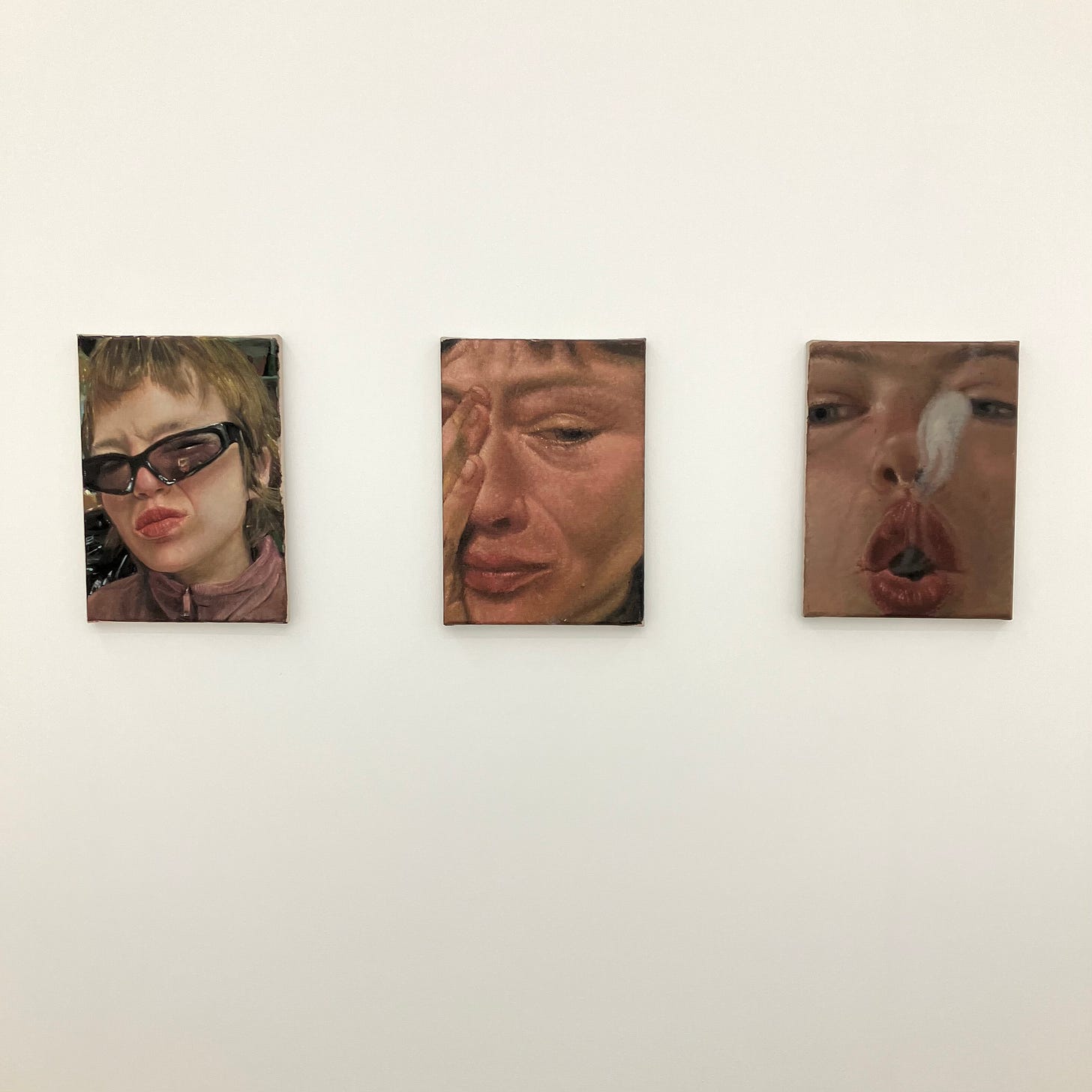Despite her youth, beauty and success, no visitor to Furni will leave thinking that Issy Wood is enjoying herself very much. The show at Carlos/Ishikawa comprises a series of close-cropped self portraits and several old sofas and footstools covered in little paintings of spoons, keys, padlocks, chains, rabbits, geese, Diet Coke cans, cheerleaders and dice. Wood’s characteristic hazy brushwork suspends everything in a drab, greyish fog, as if she has seen and done it all and is over it, like a bored rockstar.
Such an outlook went out of date around the time connoted by Wood’s temporally imprecise but distinctly nostalgic soft furnishings. However, a streak of vulnerability adds nuance to what would otherwise be a drearily familiar repetition of disaffected glamour, hardly worthy of much attention. In the two largest paintings, Wood looks up sullenly from her skincare routine, face masks peeling off: a riff on the trope that your face is the mask you show to the world. At their scale they have an undeniable force, and there is something precise and keenly felt about the way Wood admits us into an intimate setting, appears to confess her unhappiness, yet, in her impassivity, refuses any further insight into her psyche. The mask threatens to come down – but it doesn’t.
This could be read as a careful negotiation of society’s expectations of a young woman under the spotlight. But the general tenor of the show seems, rather less interestingly, to play to an audience who are trying to strike their own poses of cool disdain towards the world. For example, instead of the usual literature, the exhibition is accompanied by an A4 fold-out printed with photos of ‘introvert’ dogs from the internet. This ironic gesture seems indicative of a fear that the admission of any form of sincerity might puncture Wood’s inscrutable demeanour, or, worse, alert the audience to the presence of an actual opinion or belief. That’s not vulnerability: it’s emptiness.
Where emotion is explicitly conveyed, such as in a small painting of a crying face, the blurriness and tight cropping distance the picture from a specific context, so that the face becomes more of a type than an individual. It’s a disjunction familiar from images found online. Here, as before, a moment of tenderness is interrupted by an insurmountably high defence, wrong-footing any notion on our part that we might expect to learn something about the artist from her self portrait. With the repetition of this device, the show increasingly feels indistinguishable from the construction of glamour that it initially seemed poised to critique.
Furni’s combination of old-fashioned figuration with out-of-date nihilism makes for an undeniably stylish and coherent show, but this only goes so far. Ultimately, It’s a faulty premise. Wood’s paintings are useful insofar as they help us to understand the outlook of rich people who are tired of life. Collectors aside, the mode in which the paintings address gallery audiences is basically the same as the artificial condescension of the high-fashion model, designed to add allure to an already unattainable outfit. I’ve always found it a relief to remember that there’s simply no need to bother striving for that kind of thing. In fact, when you think about it, it doesn’t really matter much at all.
Furni is at Carlos/Ishikawa from 12 May - 7 July 2023.






